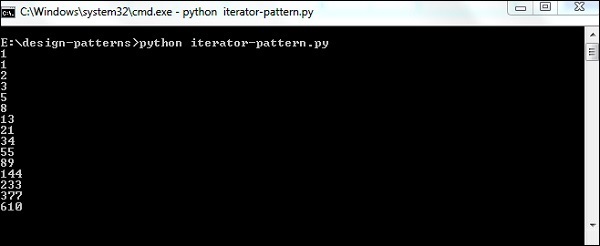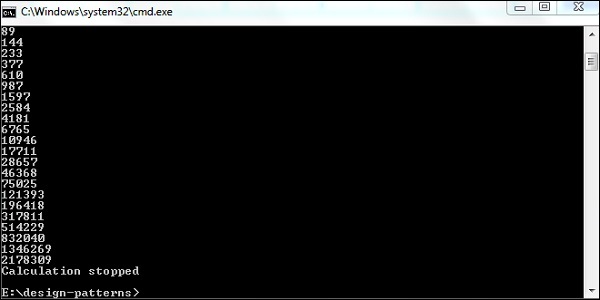Python Design Patterns Iterator Pattern
Python Design Patterns: Iterator Pattern
The iterator design pattern falls under the category of behavioral design patterns. Developers encounter the iterator pattern in nearly every programming language. This pattern helps access the elements of a collection (class) sequentially without understanding the underlying design.
How to Implement the Iterator Pattern
We will now see how to implement the iterator pattern.
import time
def fib():
a, b = 0, 1
while True:
yield b
a, b = b, a + b
g = fib()
try:
for e in g:
print(e)
time.sleep(1)
except KeyboardInterrupt:
print("Calculation stopped")
Output
The above program produces the following output –

If you pay attention to the pattern, the Fibonacci sequence and iterator pattern are printed. When the user is forcibly terminated, the following output is printed.

Explanation
This Python code follows the iterator pattern. Here, the increment operator is used to start counting. The count ends when the user forcibly terminates the program.